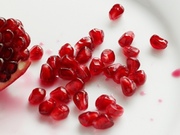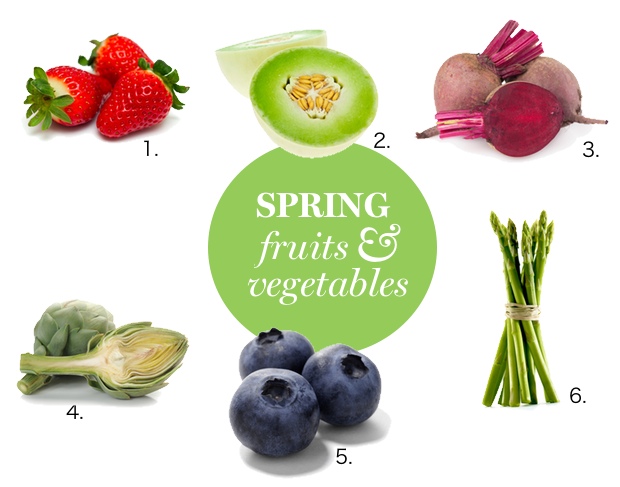Aside from the beautiful cherry blossoms and warmer weather, one thing that always gets us excited come spring is the fresh crop of in-season vegetables and fruit at local farmers markets. Local registered dietitians have their favorite spring produce, too—and shared the ways they prefer to cook and eat it. Read on for their picks.
1) Strawberries
It seems like everyone has memories of picking strawberries at some point in their lives, Rebecca Bitzer included. The fruit is her favorite for its natural sweetness, fiber, antioxidants, and wealth of vitamin C.
How to eat: Bitzer loves strawberries on top of cereal, in a fruit salad, and on their own. Try this smoothie recipe: strawberries, banana, milk, peanut butter, ice, and Greek yogurt.
2) Honeydew Melon
Loaded with vitamin C, honeydew melon makes a refreshing snack, says Elana Natker of Enlighten Nutrition. It’s also a nice source of fiber and folate.
How to eat: Cut it into chunks or wedges and eat with reduced-fat cottage cheese.
3) Beets
They may stain, but beets provide “unmatched antioxidant, anti-inflammatory, and detoxification support,” says Danielle Omar of Food Confidence.
How to eat: Try them steamed. “Once the beets are fork-tender, I peel and slice them up for salads or just toss with vinaigrette and eat as is,” Omar says.
4) Artichokes
They may look intimidating, but artichokes shouldn’t be avoided, says Kait Fortunato of Dietitian in DC and Rebecca Bitzer & Associates. They’re rich in fiber—with ten grams each—as well as disease-fighting antioxidants.
How to eat: Roast an artichoke with a drizzle of olive oil or try it as a topping for chicken or fish.
5) Blueberries
This spring berry often gives strawberries a run for their money in terms of popularity. One of the few fruits native to the US, blueberries are a great source of vitamin K, antioxidants, and anti-inflammatory properties.
How to eat: They’re tasty on their own, but Shelley Alspaugh of Rebecca Bitzer & Associates favors them for breakfast with yogurt and walnuts.
6) Asparagus
An excellent source of folate, vitamins A and K, fiber, potassium, and B vitamins, asparagus “defines spring” for Alice Bender of the American Institute for Cancer Research. The vegetable has cancer-fighting properties and contains just 20 calories in a half cup.
How to eat: Try asparagus grilled, roasted, or lightly steamed with a touch of olive oil. It’s also a nice addition to stir-fry or salad.
You Might Also Like:

7 Foods You Should Avoid Eating |

Why Pomegranate Seeds Are So Good For You |

6 Grains to Eat Now |



















